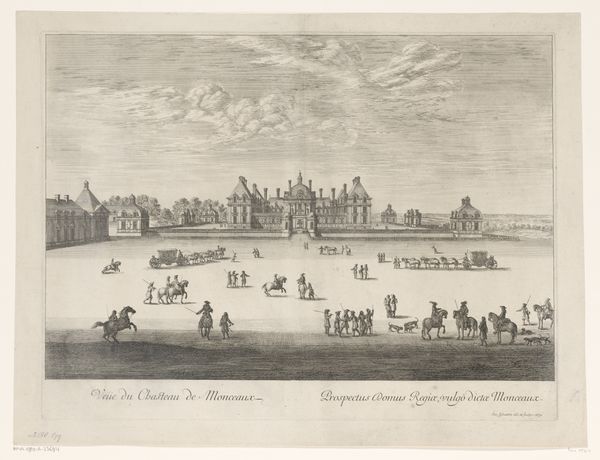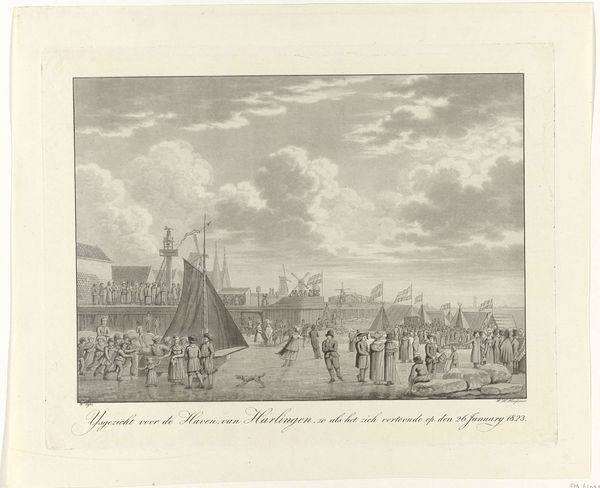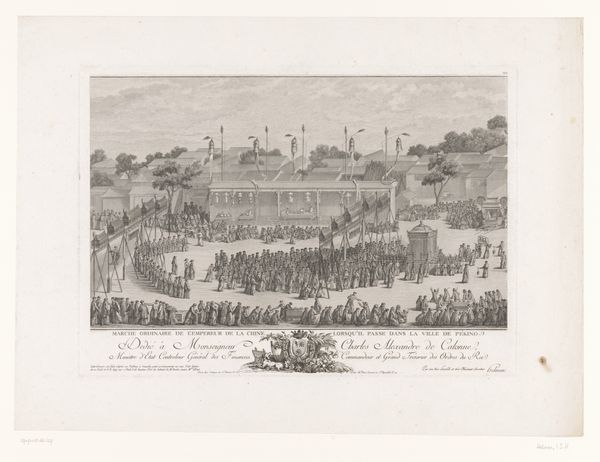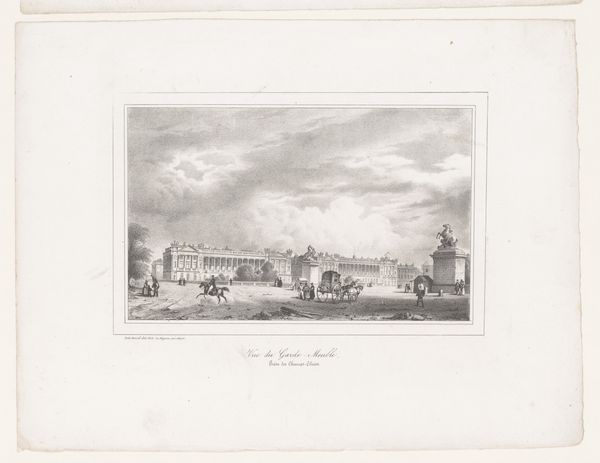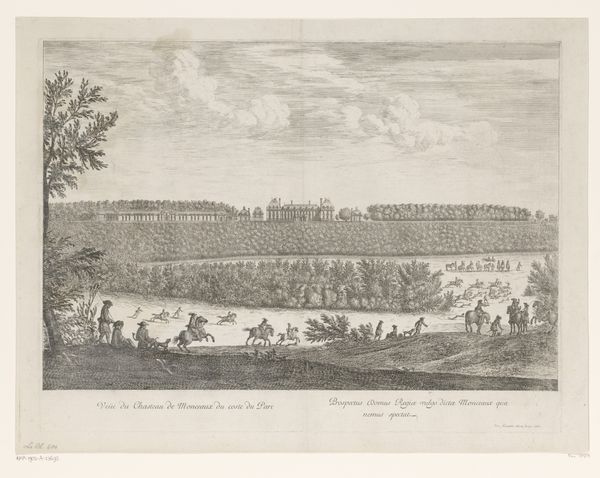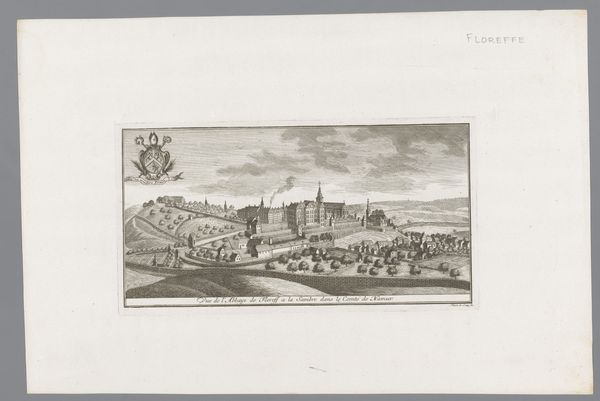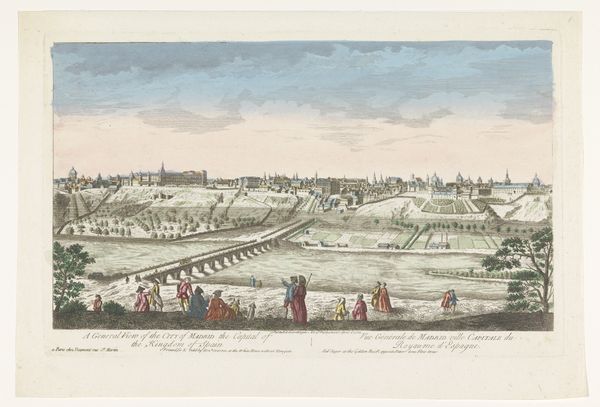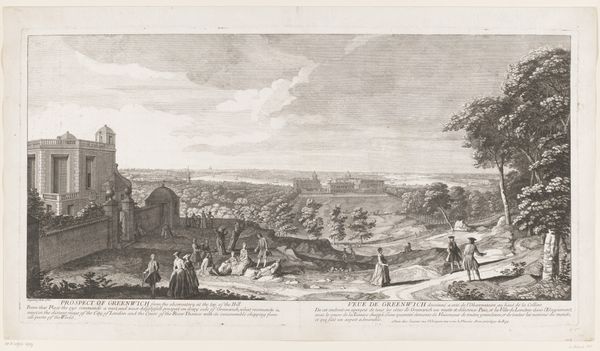
print, ink, engraving
#
neoclacissism
# print
#
landscape
#
ink
#
15_18th-century
#
genre-painting
#
engraving
Dimensions: height 384 mm, width 642 mm
Copyright: Rijks Museum: Open Domain
Curator: "Gezicht op een militair tentenkamp te Fornham" roughly translates to "View of a Military Encampment at Fornham." This print by Peltro William Tomkins, dating from 1782 to 1788, uses ink and engraving to depict a scene of organized military life. Editor: It's so neat and tidy. The landscape, even with all those tents, looks strangely…serene. All those repeating shapes of the tents…It almost transforms warfare into an orderly system. What do you think about that? Curator: It’s precisely that "orderly system" which interests me. Look at the composition itself. The linear arrangement of the tents, the way the smoke is rendered, the clear delineation of space—everything speaks to a rationalization of warfare as labor. There's a tangible emphasis on display, even down to the engraving itself, which presents clean lines devoid of any dramatic gestures. We see war being translated through industry of material. Editor: Interesting, so the aesthetic choice reflects a particular societal view…And seeing this today I’m compelled to think about issues of visibility versus invisibility of military actions. The artist seems more focused on documenting than commenting. It makes you consider how warfare was presented—and consumed—by the elite during this period. This idealized scene conveniently obscures the violence inherent in such organized displays of power. Curator: Indeed. Moreover, the dedication "To His Royal Highness George Prince of Wales" suggests a commission and patronage, inherently linking this print to circuits of power and wealth. Who has access to view this and under what conditions? Its function as both documentation and promotion, raises concerns of what has been selected to leave out. Editor: Right, by documenting one version of a scene, any dissenting narrative is repressed. And by seeing who sponsored the artwork you suddenly reveal underlying power dynamics and socio-economic factors to explore further... It's unsettling to see a war scene sanitized, presented as almost... picturesque. Curator: This print, through its materials and means of production, becomes more than just an image; it’s a materialization of power, class, and ideology that shaped both warfare and its representation. Editor: Thinking about this work really forces us to reflect critically on how images can legitimize certain actions and ideologies. So the act of viewing itself is a critical one that must consider the broader social landscape. Thank you, as always, for your astute and insightful points.
Comments
No comments
Be the first to comment and join the conversation on the ultimate creative platform.


